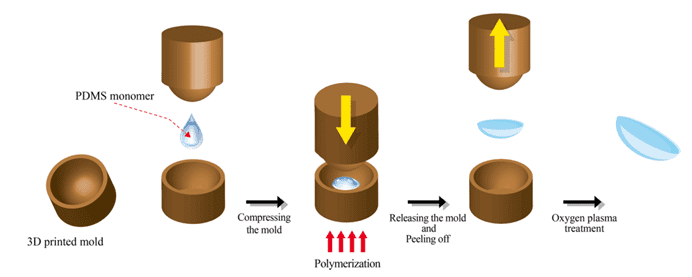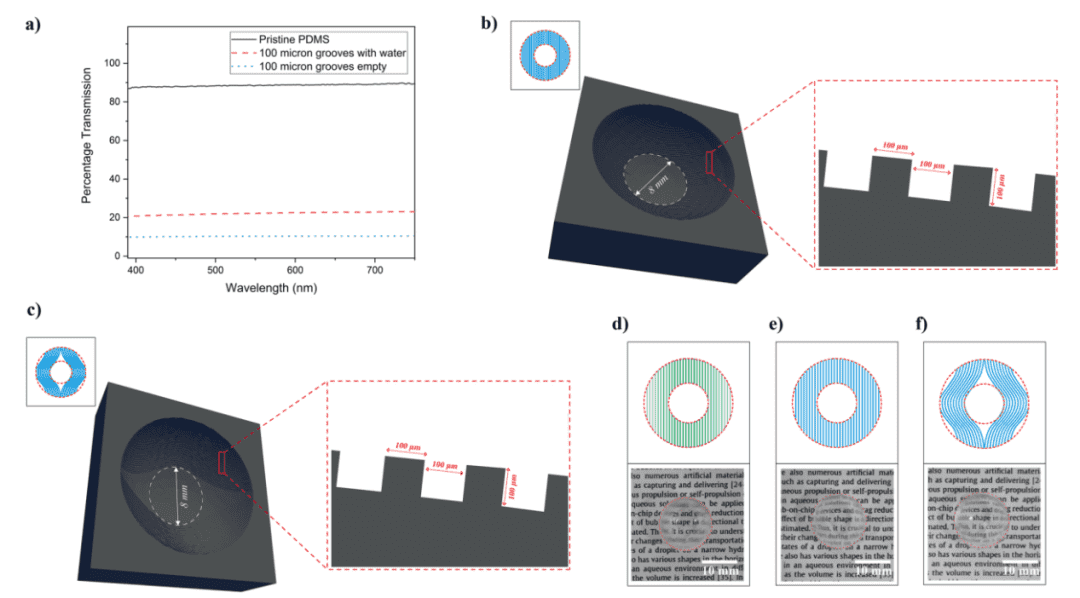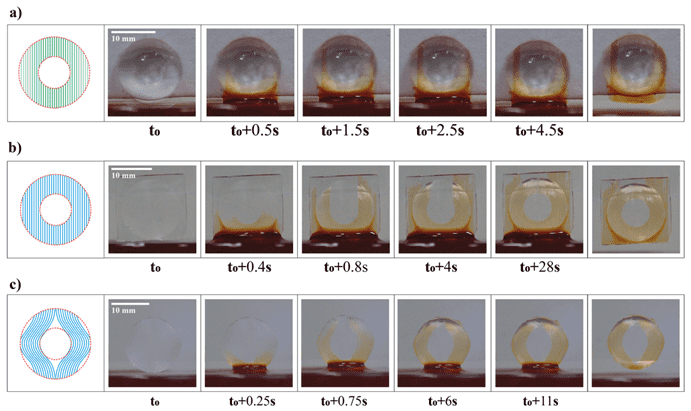[ad_1]
In recent years, invisible
Glasses
In addition to vision correction and decorations, it can also be used as a smart sensing platform for real-time monitoring of human health. However, wearing contact lenses often leads to dry eye and associated inflammation or corneal damage.At present, there are two main methods to keep contact lens wet: one method is to use a single-layer graphene coating on the surface of the contact lens to reduce water evaporation, but the preparation process of this method is relatively complicated; the other method is to use electroosmotic flow to maintain Lenses are wet, but this method requires
biology
Compatible batteries.Common preparation processes for contact lenses include centrifugal casting, molding and lathe processing. Among them, centrifugal casting and molding need to be prepared by lathe processing first.
mold
. Not only does lathe machining have the disadvantages of high cost, long cycle time, and limited machining geometry, but also directly prepared contact lenses require immediate lens hydration to avoid lens breakage. With the development of additive manufacturing technology,3D printingTechnology has been used to make contact lenses or molds for contact lenses. Compared with the lathe processing technology,3D printingThe technology has the advantages of low processing cost, high processing efficiency and customizable processing structure. However,3D printing technologyThe inherent layer-by-layer manufacturing method will produce a step effect, and the lower the molding accuracy, the greater the printing layer thickness, the more obvious the step effect, which will cause the lens processing to require additional polishing, which limits the3D printing technologyApplication in lens processing. Therefore, improving the molding accuracy, reducing the printing layer thickness, and suppressing the step effect are extremely important for the application of 3D printing technology in the preparation of contact lenses.
Recently, the research group of Sajan D. George of the Manipal Institute of Higher Education prepared a microchannel embedded contact lens based on the surface projection microstereolithography (PμSL) 3D printing technology combined with the PDMS casting process. The contact lens can utilize the capillary of the microchannel. Function to achieve self-moisturizing function. The researchers fabricated a concave mold based on the PμSL (microArch S140, Mofang Precision) 3D printing technology. In order to reduce the step effect of the printing mold, the printing layer thickness was reduced to 10 μm. The base arc of the mold is 8.5mm, the diameter is 15mm, and there are a large number of microchannels on the inner surface. The width, depth and spacing of the microchannels are all 100μm; in addition, the inner surface is also designed with an optical zone with a diameter of 8mm. channel to ensure visual transparency of contact lenses. In addition, the prepared PDMS contact lens can be treated with oxygen plasma to obtain better hydrophilicity, which further promotes the capillary to drive the surrounding liquid to flow through the microchannel to the entire lens surface, so that the contact lens lens remains wet.

Figure 1. Fabrication process of microchannel-embedded contact lenses

Figure 2. PDMS contact lens lenses prepared by different methods

Figure 3. Capillary Filling Process for PDMS Contact Lenses
The researchers prepared two PDMS contact lens lenses based on PμSL 3D printing technology: one type of contact lens with microchannels in a straight shape, and the optical zone blocks part of the linear microchannels; another type of contact lens with microchannels Presenting a curved shape, the microchannel can ensure continuous flow of fluid. In addition, the researchers also used a contact lens prepared based on fused filament fabrication technology as a comparison. The microchannels in the contact lens lens are derived from the step effect in the mold (the printed layer thickness is 100 μm), and the optical area of the mold needs to be manually polished. . The above three contact lens lenses were placed in water to observe capillary filling. The research results show that the lens with curved microchannels prepared based on PμSL 3D printing technology has controllable size and distribution of the microchannels, and the optical zone does not block the microchannels, so the liquid can be driven by the capillary of the microchannels. Smooth, continuous and fast flow to the entire lens surface. The research results provide new ideas for the preparation of microfluidic chips for biomarker detection, and were published in Additive Manufacturing under the title “Self-moisturizing contact lens employing capillary flow”.
Original link:
https://doi.org/10.1016/j.addma.2022.102842
(responsible editor: admin)
[ad_2]

0 Comments for “Manipal Institute of Higher Education, India: Fabrication of Microchannel Embedded Self-Moisturizing Contact Lenses Based on PμSL 3D Printing Technology”